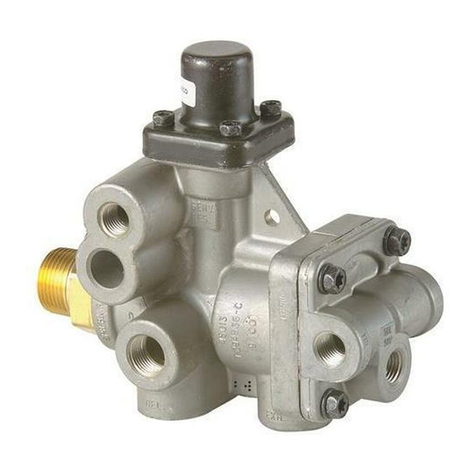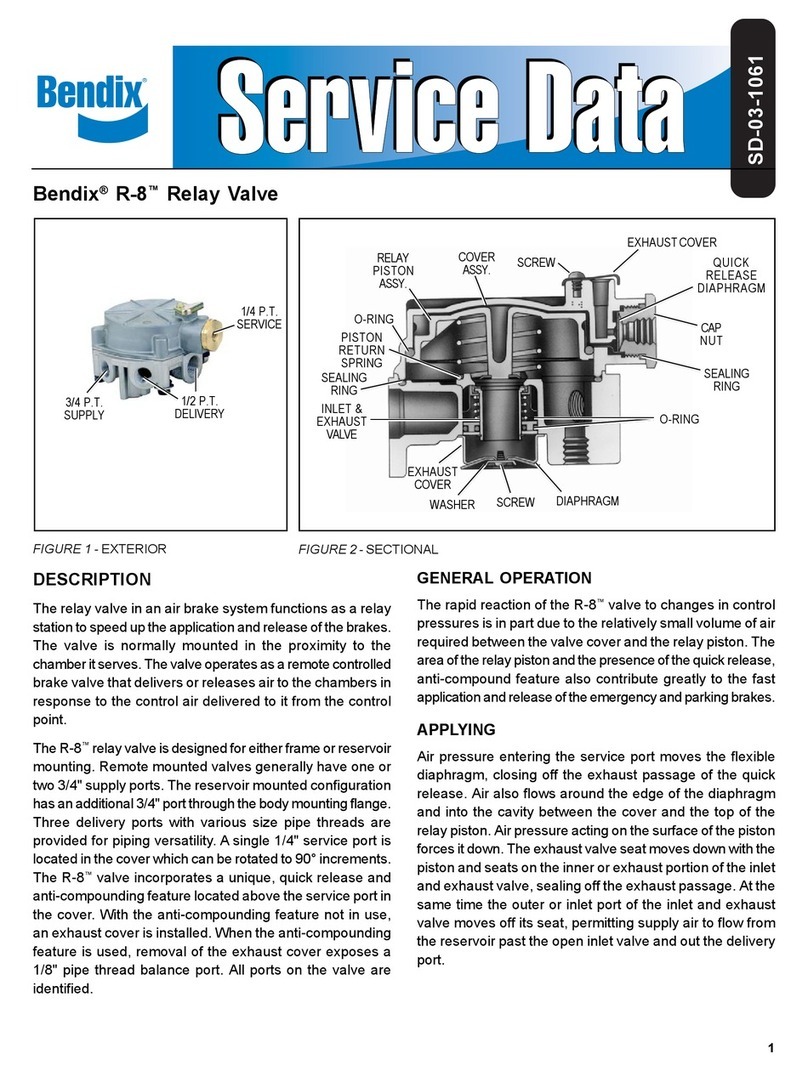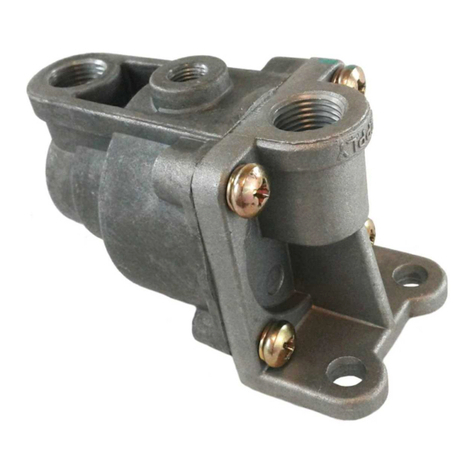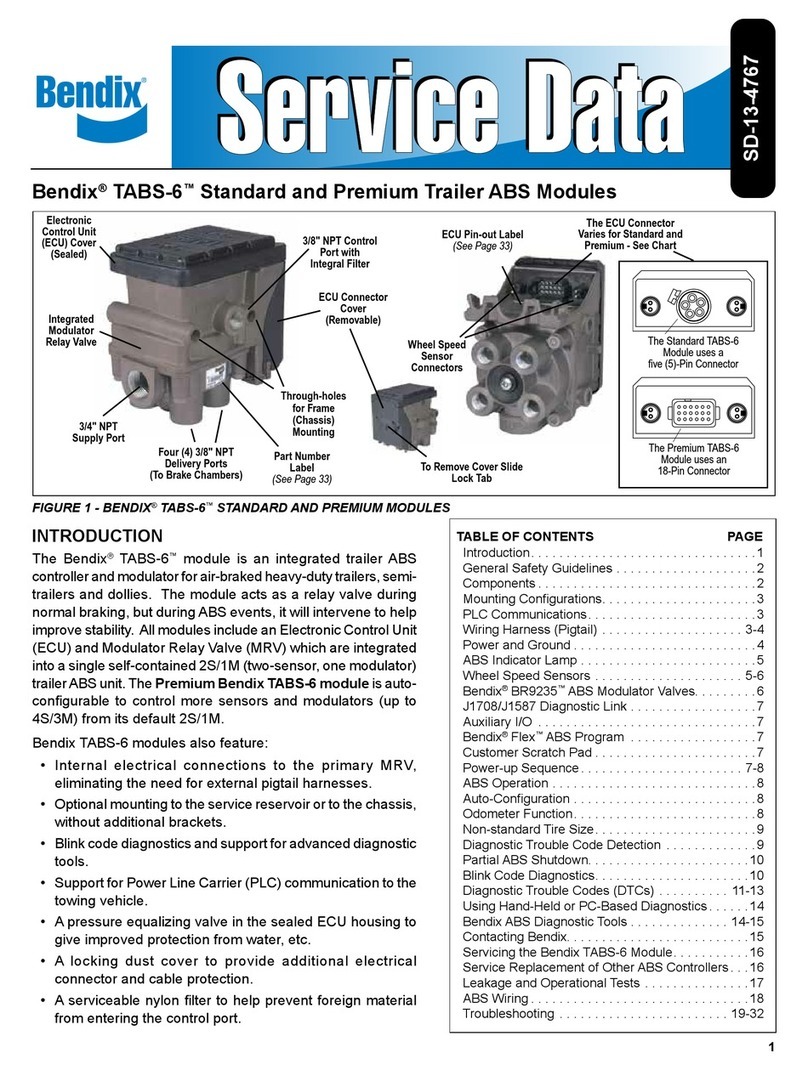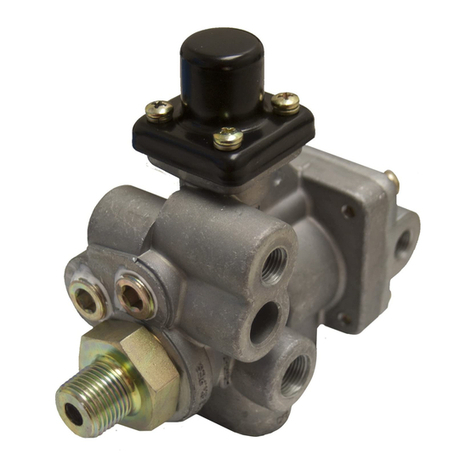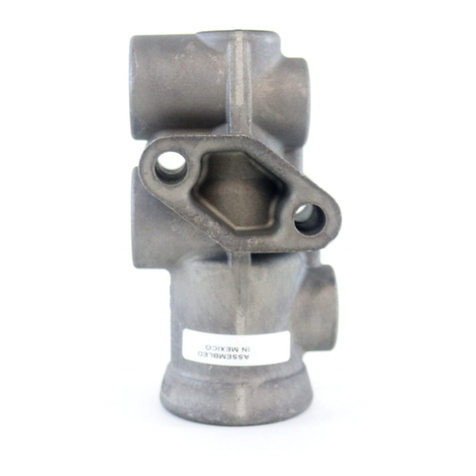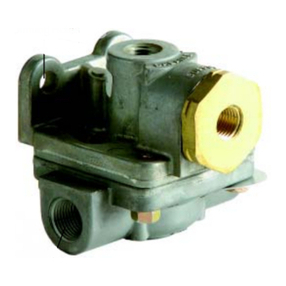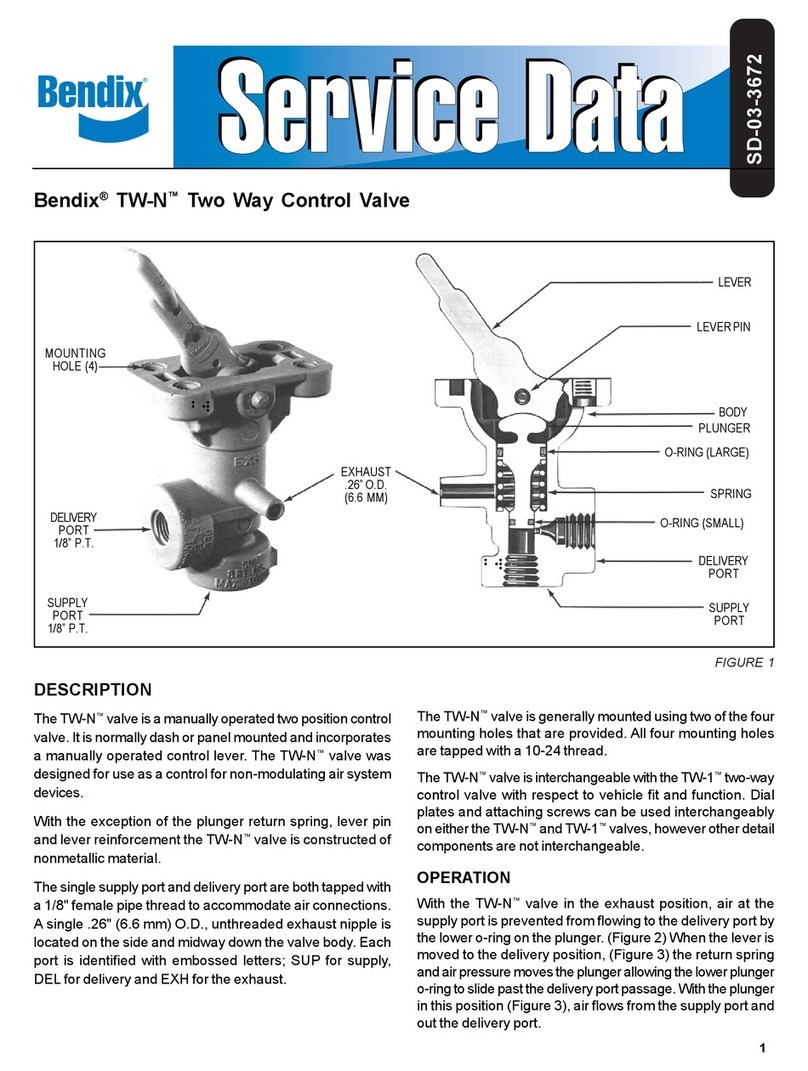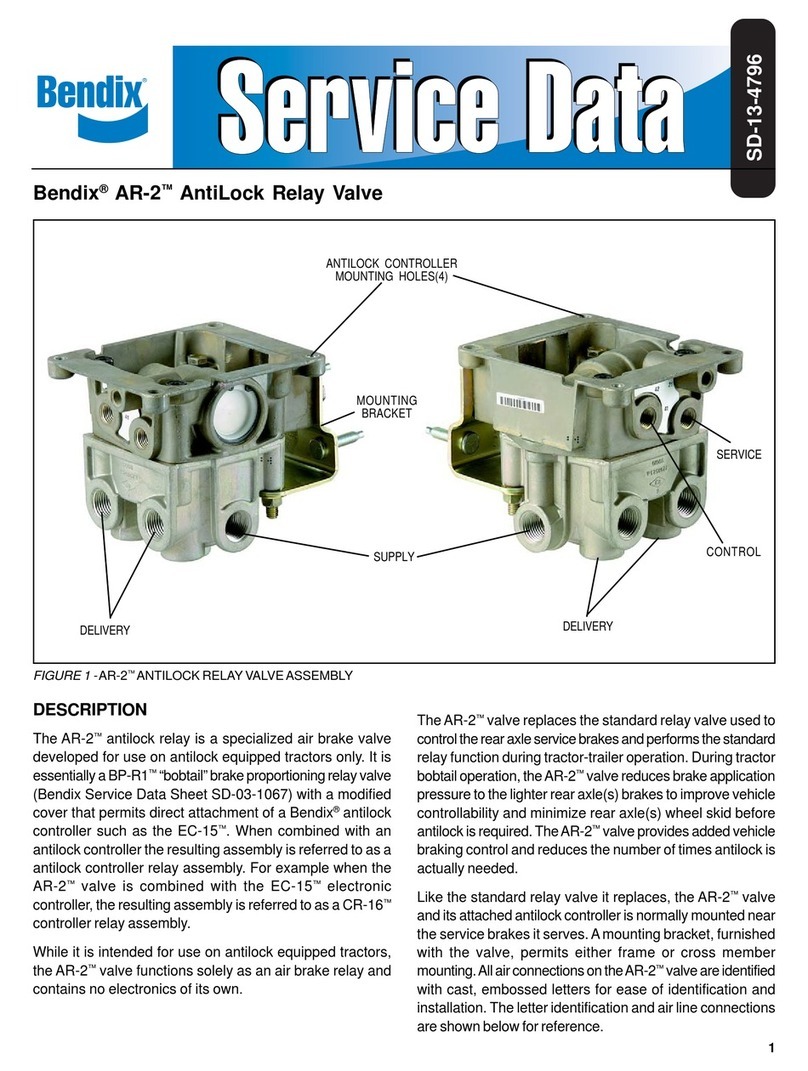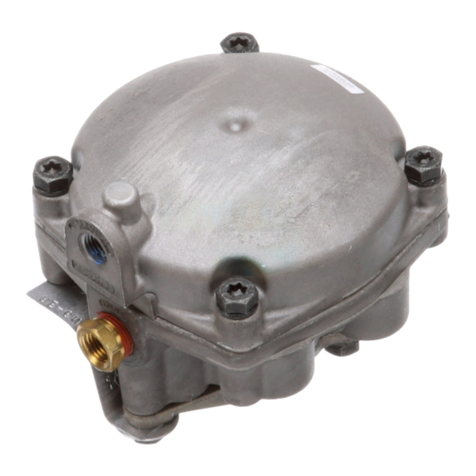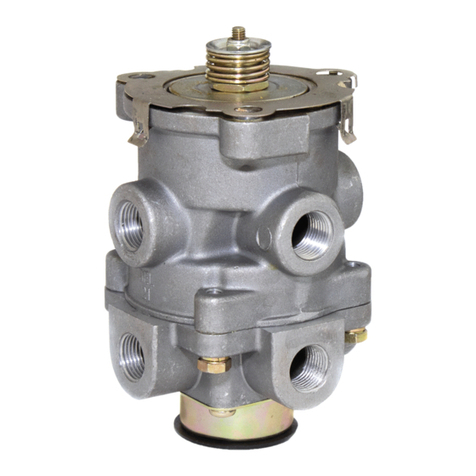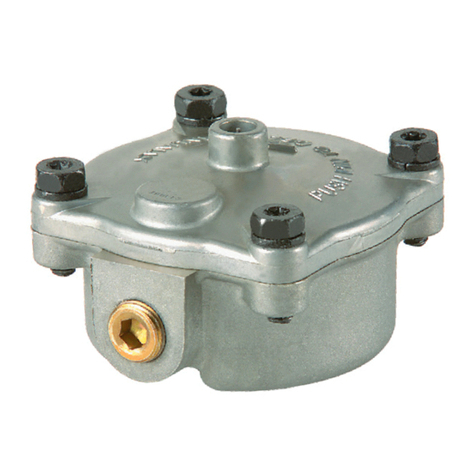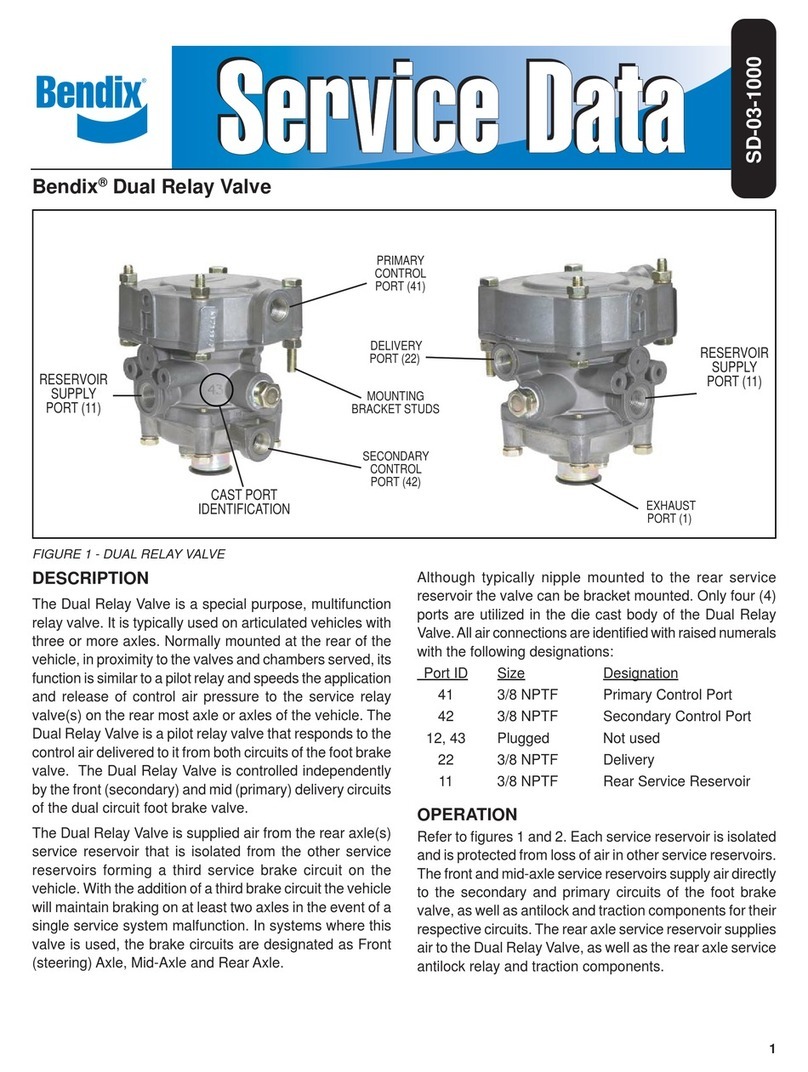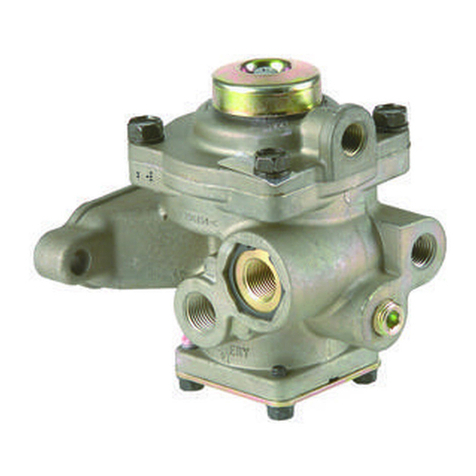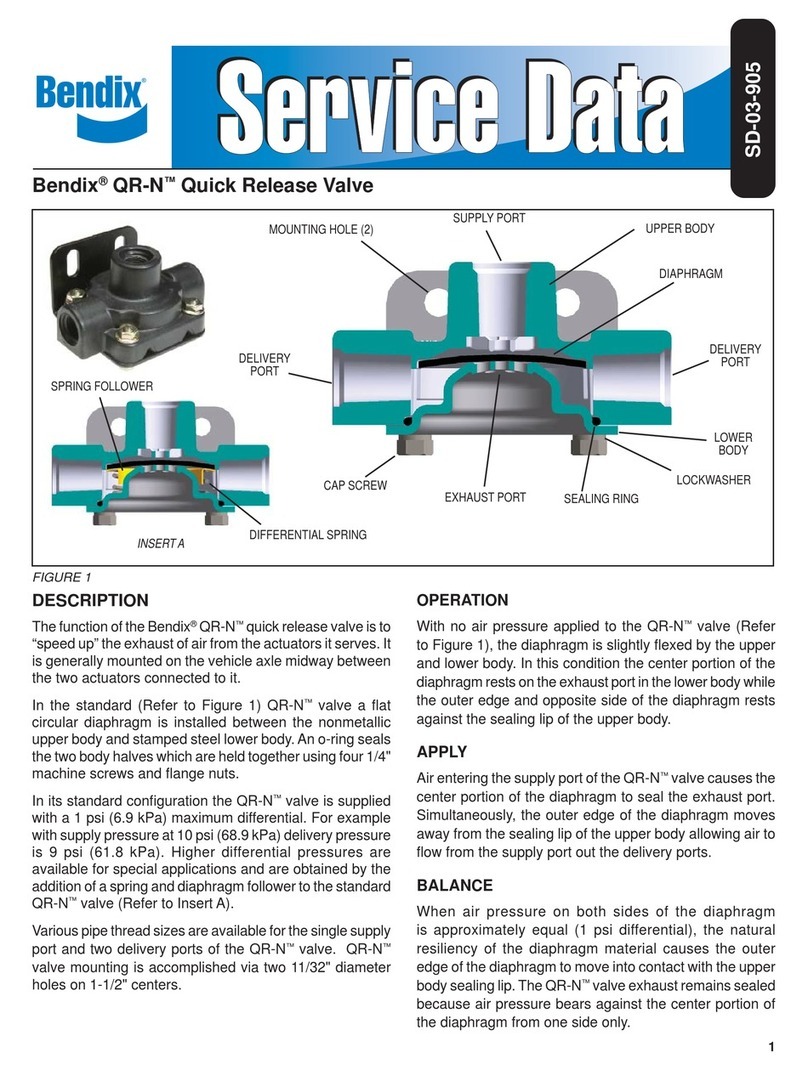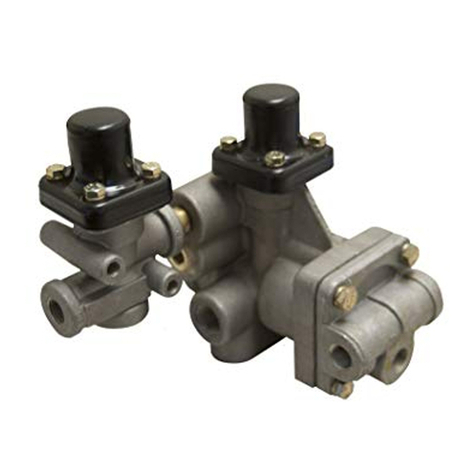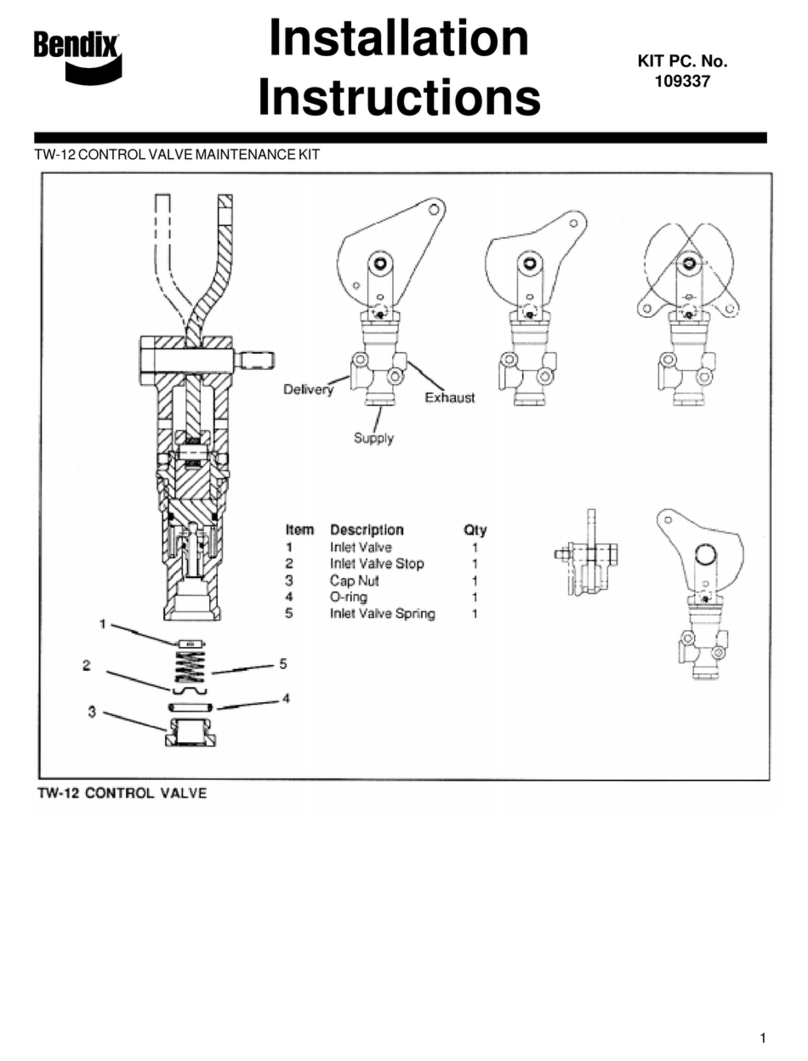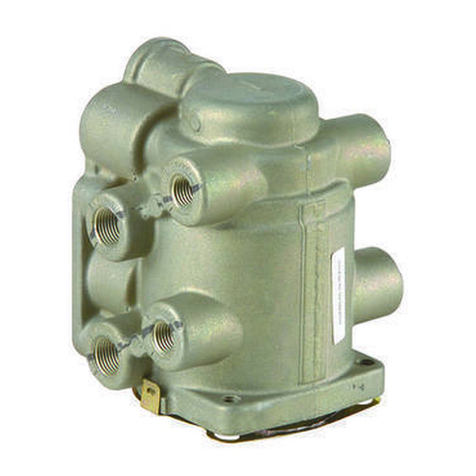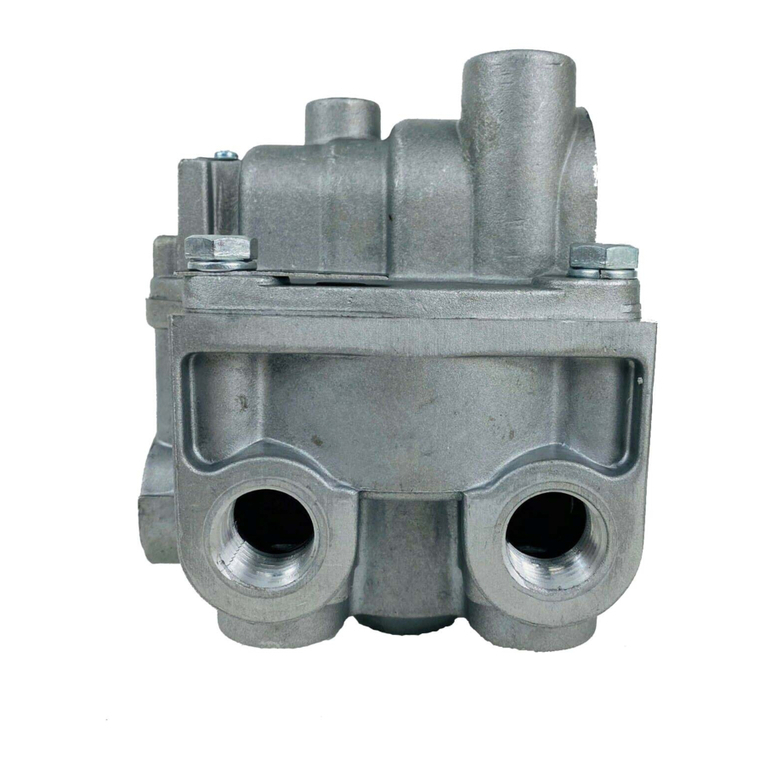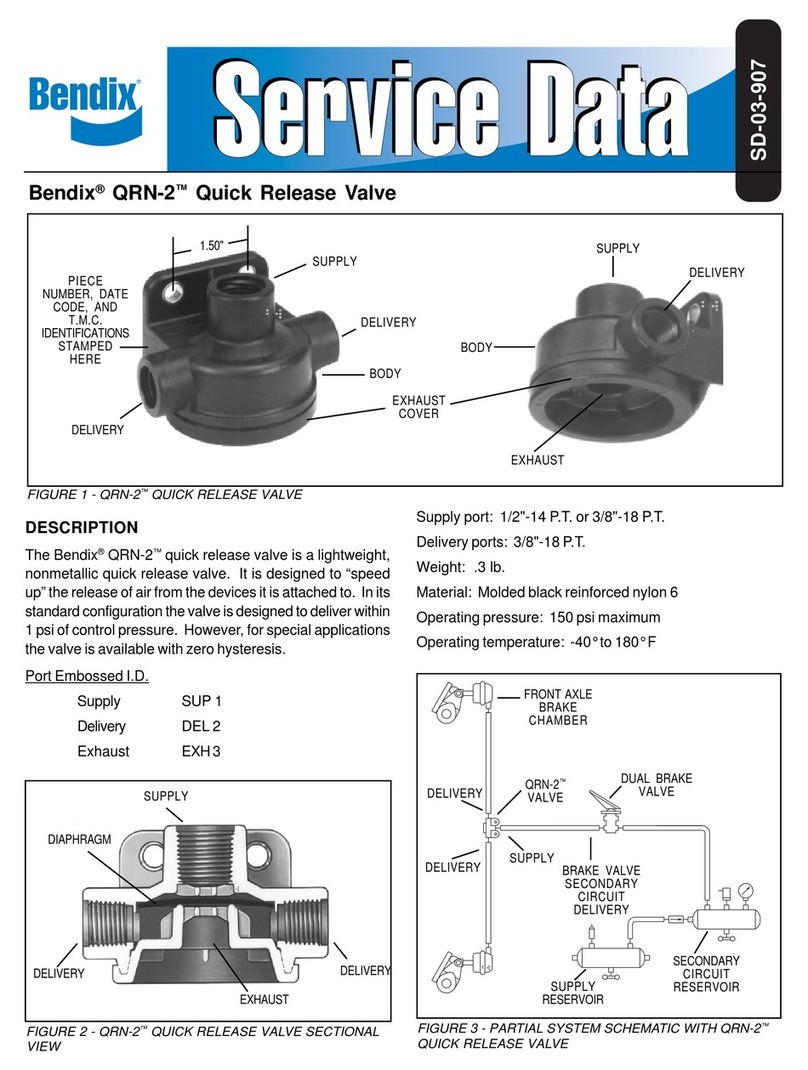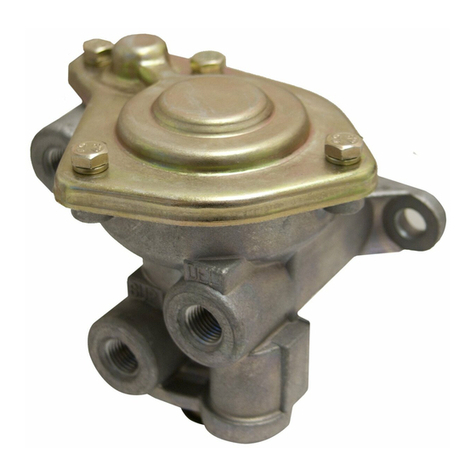
2
PREVENTIVE MAINTENANCE
Important: Review the Bendix Warranty Policy before
performinganyintrusivemaintenanceprocedures.Awarranty
maybevoidedif intrusive maintenanceisperformedduring
thewarrantyperiod.
No two vehicles operate under identical conditions, as a
result, maintenance intervals may vary. Experience is a
valuableguidein determiningthebestmaintenance interval
forairbrakesystemcomponents.At a minimum, theRV-4™
valveshould beinspectedevery6months or1500operating
hours,whichevercomes first, for proper operation. Should
the RV-4™valve not meet the elements of the operational
testsnotedinthisdocument,furtherinvestigationandservice
ofthevalve may berequired.
OPERATING & LEAKAGE TESTS
OPERATING
Connect an accurate test gauge in the supply and delivery
lines of the RV-4™valve. Make certain that supply air
pressureisatthevehiclemanufacturersrecommendedlevel.
Delivery pressure should be within plus or minus 5 p.s.i. of
the delivery pressure specified for the RV-4™valve. If not,
thevalveshouldbe repaired or replaced. Ifthevalvemeets
this operating test, proceed to the leakage tests. Do not
remove the gauges at this time.
LEAKAGE
Withsupplypressureatthelevelrecommendedbythevehicle
manufacturer, apply a soap solution to the 1/4" N.P.T. plug
inthe controlport,aroundthesupplyportandtotheexhaust.
Leakage should not exceed a 1" diameter bubble in 3
seconds (175 SCCM). If leakage is excessive, the valve
shouldberepairedorreplacedandtheoperatingandleakage
testsperformedatthetimeofrepairorreplacement.Proceed
tothe“RemovalandInstallation”instructions.Thisconcludes
theoperationandleakage tests andthetestgaugesshould
beremoved.
WARNING! PLEASE READ AND FOLLOW
THESE INSTRUCTIONS TO AVOID
PERSONAL INJURYOR DEATH:
When working on or around a vehicle, the following
general precautions should be observed at all times.
1. Park the vehicle on a level surface, apply the
parking brakes, and always block the wheels.
Always wear safety glasses.
2. Stop the engine and remove ignition key when
working under or around the vehicle. When
working in the engine compartment, the engine
should be shut off and the ignition key should be
removed. Where circumstances require that the
enginebe in operation,EXTREMECAUTION should
be used to prevent personal injury resulting from
contact with moving, rotating, leaking, heated or
electrically charged components.
3. Do not attempt to install, remove, disassemble or
assemble a component until you have read and
thoroughly understand the recommended
procedures. Useonlythe propertoolsand observe
all precautions pertaining to use of those tools.
4. If the work is being performed on the vehicle’s air
brake system, or any auxiliary pressurized air
systems,make certainto drainthe airpressure from
all reservoirs before beginning ANY work on the
vehicle. If the vehicle is equipped with an AD-IS™
air dryer system or a dryer reservoir module, be
sure to drain the purge reservoir.
5. Following the vehicle manufacturer’s
recommended procedures, deactivate the
electrical system in a manner that safely removes
all electrical power from the vehicle.
6. Never exceed manufacturer’s recommended
pressures.
7. Never connect or disconnect a hose or line
containing pressure; it may whip. Never remove a
component or plug unless you are certain all
system pressure has been depleted.
8. Use only genuine Bendix®replacement parts,
components and kits. Replacement hardware,
tubing, hose, fittings, etc. must be of equivalent
size, type and strength as original equipment and
be designed specifically for such applications and
systems.
9. Components with stripped threads or damaged
parts should be replaced rather than repaired. Do
notattemptrepairs requiring machiningorwelding
unless specifically stated and approved by the
vehicle and component manufacturer.
10. Prior to returning the vehicle to service, make
certain all components and systems are restored
to their proper operating condition.
REMOVAL & INSTALLATION
REMOVAL
1. Holdthevehicle on a levelsurfacebymeans other than
the air brakes.
2. Removeallair pressure fromallreservoirs.
3. Identify, mark and then disconnect all air lines
attachedtothevalve.
4. Removethevalve.
INSTALLATION
1. Inspectandcleanallairlinesthatconnecttothevalve.
2. Clean the vehicle valve mounting area and mount the
valve.
3. Reconnect the air lines according to the identification
marksmadeduring removal.
DISASSEMBLY (Refer to Figure 2)
1. Removeexhaustcoverscrew(1),exhaustcover(2),and
exhaustdiaphragm(3).
2. Remove four cap screws (4) with lockwashers (5) and
cover(6).
3. Removecontrolpiston(7).
